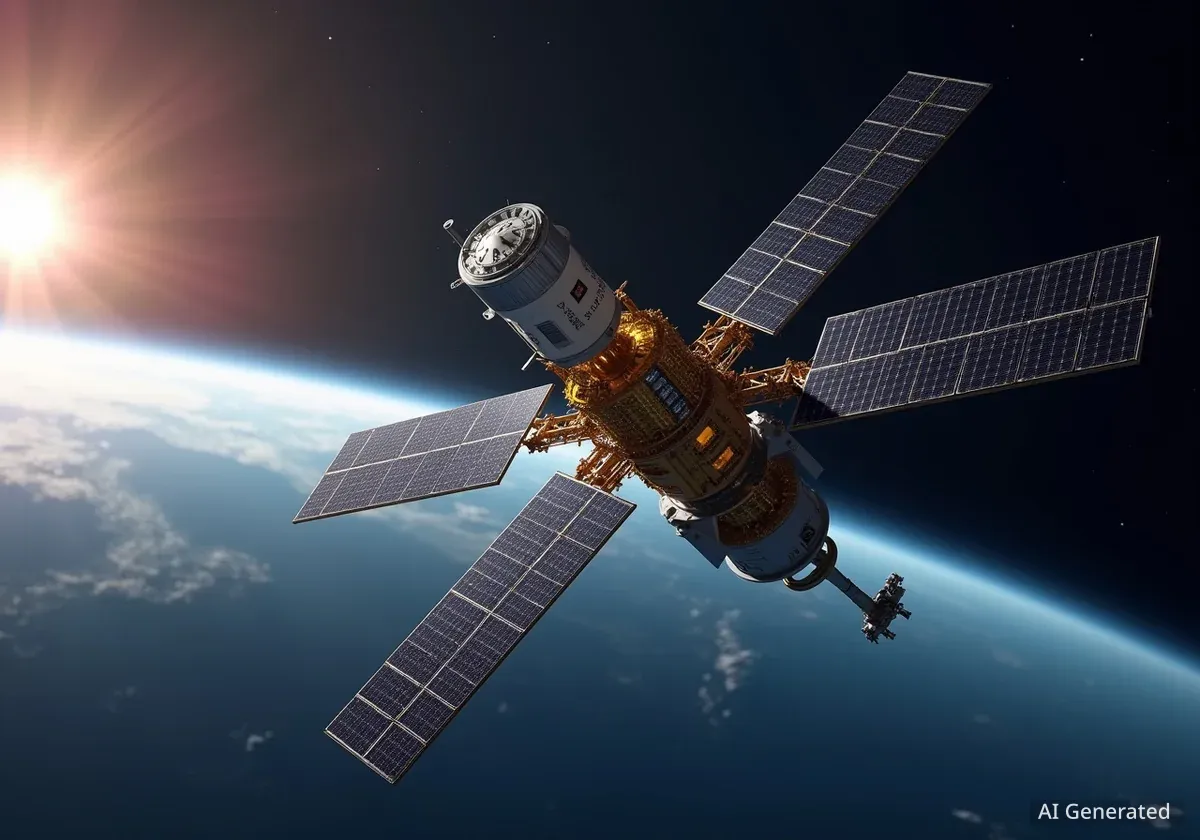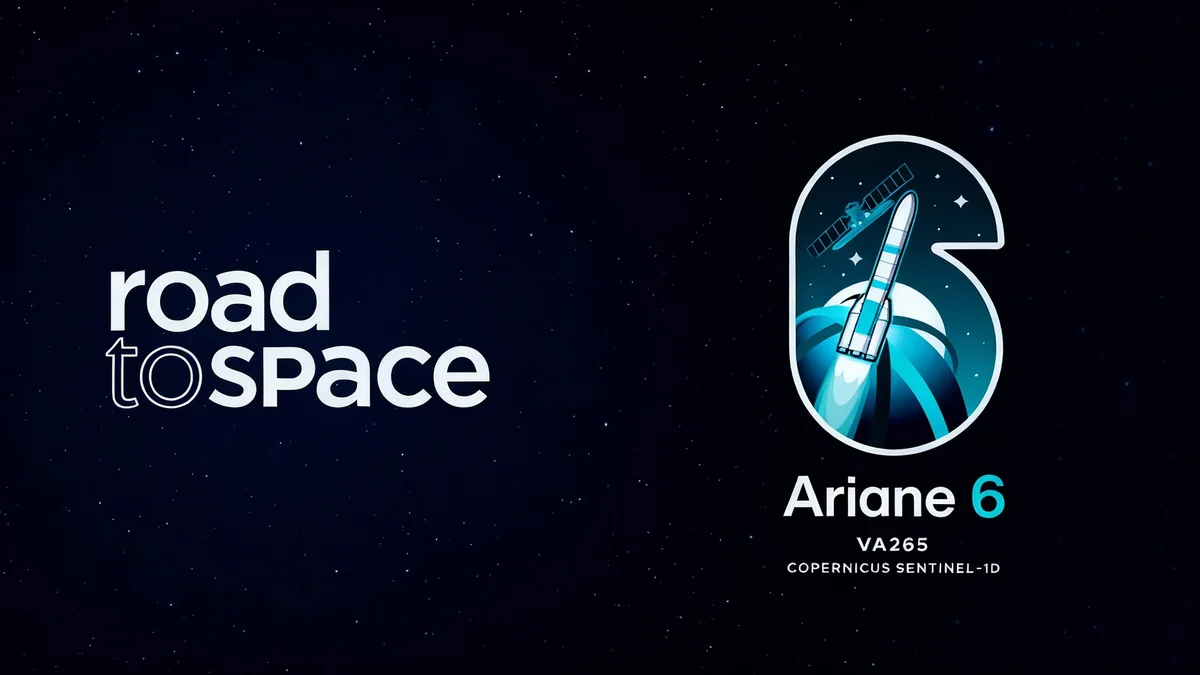Google is venturing into a new frontier for artificial intelligence, developing a project called Suncatcher that aims to place AI computing power in space. This ambitious initiative envisions constellations of solar-powered satellites, equipped with Google's Tensor Processing Units (TPUs) and connected by high-speed optical links, to scale machine learning compute outside Earth's atmosphere.
Key Takeaways
- Project Suncatcher plans to deploy AI compute, specifically Google TPUs, into low-Earth orbit.
- The system uses solar-powered satellites in close formation, connected by free-space optical links for high-bandwidth data transfer.
- Early research shows promising results for radiation hardness of TPUs and the feasibility of compact satellite formations.
- Future launch costs are projected to decrease significantly, potentially making space-based data centers economically viable.
- A learning mission with Planet is scheduled for early 2027 to test prototype satellites and optical links.
The Vision for Space-Based AI Infrastructure
Artificial intelligence is a foundational technology with the potential to drive new scientific discoveries and help address global challenges. Google is now exploring how to unlock its full potential by moving AI compute into space. The Sun provides an immense energy source, emitting power more than 100 trillion times humanity’s total electricity production.
In orbit, a solar panel can be up to eight times more productive than on Earth. It can also produce power almost continuously, reducing the need for large batteries. This makes space an ideal location for scaling AI compute in the future, according to researchers.
Did You Know?
The Sun is our solar system's ultimate energy source, providing over 100 trillion times humanity's total electricity production.
Project Suncatcher, a new research moonshot, envisions compact constellations of solar-powered satellites. These satellites would carry Google TPUs and connect using free-space optical links. This approach offers significant potential for scale and minimizes impact on terrestrial resources.
Overcoming Technical Hurdles in Orbit
Building a space-based AI infrastructure presents several technical challenges. Large-scale machine learning workloads require distributing tasks across numerous accelerators with high-bandwidth, low-latency connections. To achieve performance comparable to ground-based data centers, links between satellites must support tens of terabits per second.
Google's analysis suggests this is possible using multi-channel dense wavelength-division multiplexing (DWDM) transceivers and spatial multiplexing. However, this requires received power levels thousands of times higher than typical long-range deployments. Researchers plan to overcome this by flying satellites in very close formation, within kilometers or less, to close the link budget.
"Our team has already begun validating this approach with a bench-scale demonstrator that successfully achieved 800 Gbps each-way transmission (1.6 Tbps total) using a single transceiver pair," states Travis Beals, Senior Director of the Paradigms of Intelligence Project.
Maintaining Satellite Formations
High-bandwidth inter-satellite links demand a much more compact satellite formation than any current system. Researchers developed numerical and analytic physics models to analyze the orbital dynamics of such a constellation. They used an approximation based on the Hill-Clohessy-Wiltshire equations, describing orbital motion relative to a circular reference orbit.
A JAX-based differentiable model refined these calculations to account for further perturbations. At the planned constellation altitude of 650 km, Earth's non-spherical gravitational field and atmospheric drag are the dominant non-Keplerian effects. Models indicate that with satellites positioned just hundreds of meters apart, only modest station-keeping maneuvers will be necessary to maintain stable constellations in a sun-synchronous orbit.
What is a Sun-Synchronous Orbit?
A sun-synchronous orbit is a special type of low-Earth orbit where a satellite passes over any given point on Earth's surface at the same local mean solar time. This ensures consistent lighting conditions, maximizing solar energy collection for satellites like those in Project Suncatcher.
Radiation Hardness and Economic Feasibility
For machine learning accelerators to function effectively in space, they must withstand the harsh environment of low-Earth orbit. Google tested Trillium, its v6e Cloud TPU, using a 67MeV proton beam to assess its resilience to total ionizing dose (TID) and single event effects (SEEs).
The results were promising. The High Bandwidth Memory (HBM) subsystems were the most sensitive components, but they only showed irregularities after a cumulative dose of 2 krad(Si). This is nearly three times the expected shielded five-year mission dose of 750 rad(Si). No hard failures occurred due to TID up to the maximum tested dose of 15 krad(Si) on a single chip, suggesting Trillium TPUs are surprisingly radiation-hard for space applications.
Falling Launch Costs
Historically, high launch costs have been a major barrier for large-scale space-based systems. However, an analysis of historical and projected launch pricing data indicates that with a sustained learning rate, prices could fall to less than $200 per kilogram by the mid-2030s.
At this price point, the cost of launching and operating a space-based data center could become roughly comparable to the reported energy costs of an equivalent terrestrial data center on a per-kilowatt per-year basis. This makes the concept of space-based AI compute more economically viable than ever before.
The Road Ahead: Learning Mission and Future Designs
Initial analysis confirms that the core concepts of space-based machine learning compute are not limited by fundamental physics or insurmountable economic barriers. However, significant engineering challenges remain. These include thermal management, high-bandwidth ground communications, and ensuring on-orbit system reliability.
To begin tackling these challenges, Google's next milestone is a learning mission in partnership with Planet. This mission is slated to launch two prototype satellites by early 2027. The experiment will test how Google's models and TPU hardware operate in space. It will also validate the use of optical inter-satellite links for distributed machine learning tasks.
Ultimately, gigawatt-scale constellations may benefit from more radical satellite designs. This could involve combining new compute architectures suited for the space environment with mechanical designs that tightly integrate solar power collection, compute, and thermal management. Just as complex system-on-chip technology was driven by modern smartphones, scale and integration will advance what is possible in space.





